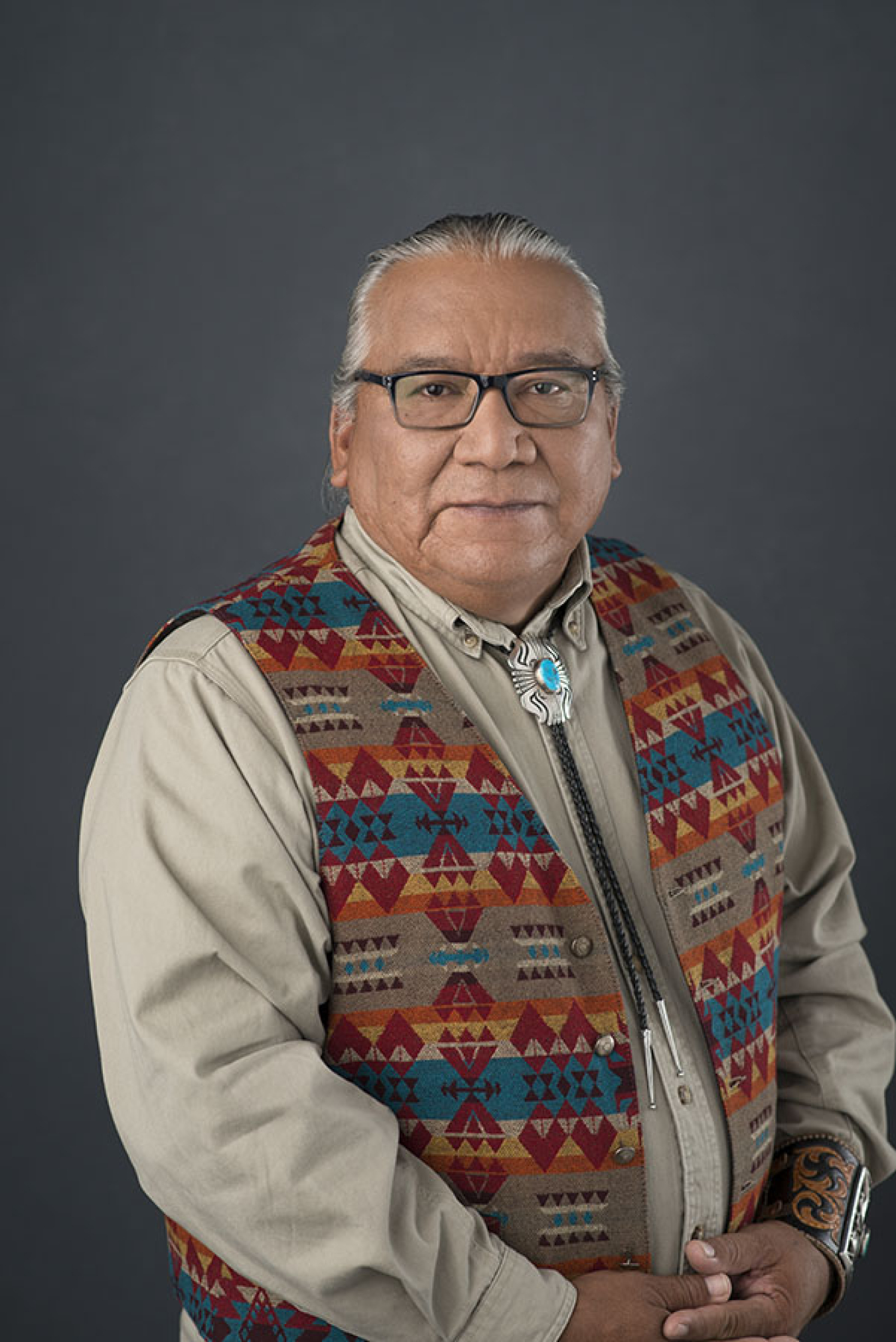Appointee is a Diné from the Navajo Nation.
September 15, 2021
A Diné from the Navajo Nation has been hired to fill the role as liaison for the Community Outreach Network (CON).
David Delmar was contracted in late July through BRIC, a Navajo Nation enterprise and subsidiary of the Diné Development Corporation, to act as liaison for the network.
Delmar recently completed his master’s study in organizational leadership, which he says enhanced his knowledge and skills in promoting corporate objectives in business-unit operations and managing resources in sustainable practices.
“I look forward to applying this knowledge and previous experience as the new liaison with the Community Outreach Network in the Diné Development Corporation,” he said.
Delmar originates from Ak’ih Dah Nást’ání near Ts’ah Bii’ Kin on the Navajo Reservation in northern Arizona. He has 20 years of experience in supervision, programs and operations management. Delmar’s skill set often has him contributing to the well-known Navajo Times weekly newspaper.
Delmar will spend most of his time teleworking, but he will have office space at the Window Rock Outreach Office when he is attending meetings with CON agency members and interacting with Navajo Nation officials.
The CON was created by Congress in 2007, directing five federal agencies to coordinate with one another to address uranium-related issues within the Navajo Nation.
The five original agencies were the U.S. Environmental Protection Agency (EPA), the Bureau of Indian Affairs (BIA), the U.S. Nuclear Regulatory Commission (NRC), the U.S. Department of Energy (DOE), the Indian Health Service (IHS), and the Agency for Toxic Substances and Disease Registry (ATSDR), in consultation with the Navajo Nation and Hopi Tribe.
The original guiding document was called the Five-Year Plan and it outlined the initial collaborative work among the agencies from 2008-2014. The second Five-Year Plan highlighted the accomplishments from the previous plan and built on additional initiatives from 2014 to 2018. In February 2021, the 10-Year Plan was finalized, aiming to advance and expand the work of the previous Five-Year Plans.
A focal point of all the plans has been to support community outreach and information sharing among federal agencies, and more importantly, to community members of the Navajo Nation and Hopi Tribe.
One member of the network, Vivian Craig, says she benefits from attending the monthly CON meetings, where the group is provided updates and discusses the next steps on how to better educate community members.
“CON is very important to me. I am happy that I am allowed to participate because it is a collaboration of many agencies,” said Craig, a senior environmental specialist with the Navajo Nation EPA Superfund program. “The Navajo Nation gets to see that we all work together regarding risk to Navajos from abandoned uranium mines.”
In 2016, the DOE Office of Legacy Management (LM) showed a commitment to the success of the collaboration by committing dollars for the full-time position of Community Outreach Network liaison. The liaison’s key functions are to identify, attend, and represent the network at various tribal events where helpful information and resources are shared with community members about the federal agency’s collaborative efforts and services.
In April 2021, when LM transitioned from one support contractor to another, a key strategy was identified to subcontract the Community Outreach Network liaison position through the LM contractor. This strategy would allow the liaison to be more independent and act autonomously in equally representing the members of the CON group.
Over the years, the network membership has grown, and outreach efforts have expanded. Prior to the COVID-19 pandemic, the network liaison, along with network members, provided information to community members at yearly Navajo Nation fairs, the Monument Valley Marathon, and small community events such as Cameron Days, which occurs just outside of Cameron, Arizona.
The network has also created and presented an informational program titled Uranium 101, which is shared by invitation from Navajo Nation Chapter Houses to their memberships and covers topics such as the effects of uranium exposure on humans and livestock. Delmar will help grow these activities and look for ways to continue the level of outreach through these challenging times.
His first meeting as the network liaison was Wednesday, Sept. 15 via teleconference. His skill set will help develop additional partnerships and identify opportunities for more interaction with community members.
ABOUT THE NAVAJO NATION
The Navajo Nation is the largest Indian reservation in the United States, comprising around 27,000 square miles across Arizona, southeastern Utah, and northwestern New Mexico. Around 1948, in the rush to build nuclear weapons to fight the Cold War, there were nearly 4 million tons of uranium ore extracted from the Navajo Nation under leases with the tribal government. When the mining stopped around 1986, more than 500 mine sites had been abandoned.
While reclamation and remediation began at some of the mine sites, many went untouched, with limited outreach and interaction from the federal government to the residents in and around the communities where the open mine sites remained.
In 2015, in tandem with hiring a liaison, LM contractors leased office space in Window Rock, Arizona, the capital of the Navajo Nation, hosting the office of the president and vice president along with all branches of the Navajo Nation government. The space not only serves as an office for the coordinator, it also provides a visitors’ center for interested community members to come pick up informational brochures about the agencies and resources they offer to the public. Network members are welcome and encouraged to work from the office space during office hours while they are in town visiting with other federal agencies.
The Community Outreach Network liaison also organizes a monthly conference call among the network members to establish a platform through which the agencies share information with one another to better strengthen their ability to streamline outreach efforts among the group.

